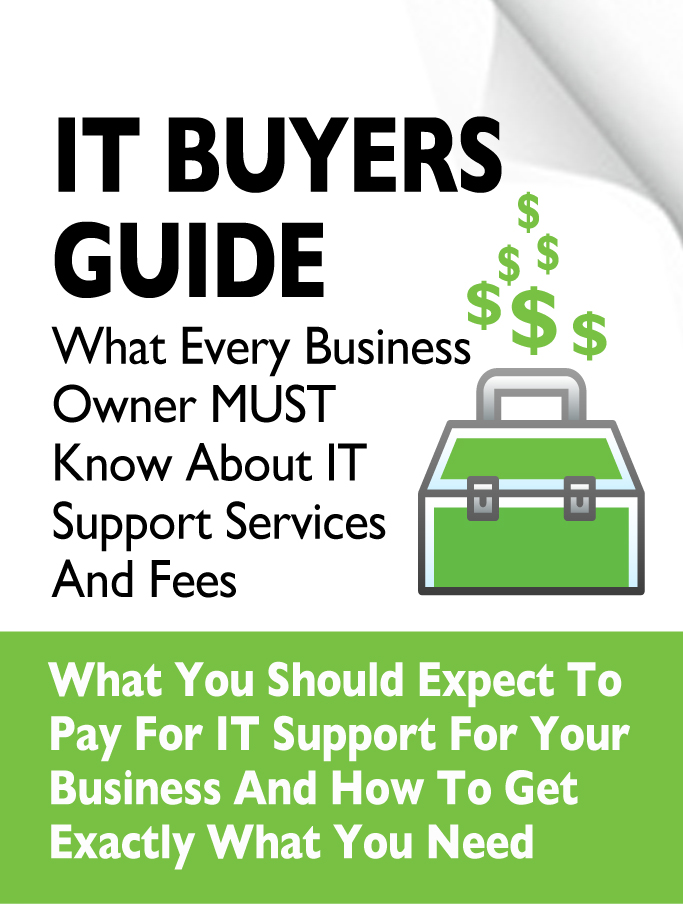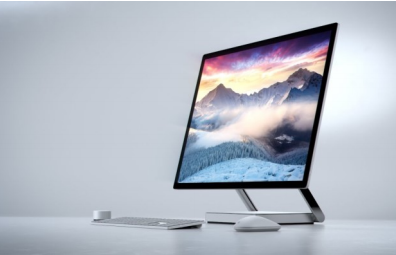
Summer is upon us… Time for a stroll in the park… softball… fishing… a few rounds of golf…
Yet how could you possibly relax if some random bit of malware, software glitch or cyber-attack catches you off guard just as you’re walking out the door? A welldesigned secure computer network gives you the confidence that “all systems are go,” whether you’re having fun in the sun, or just getting things done with your team.
Here’s a quick nine-step checklist we use to ensure that a company’s computer network, and the data for that business, is safe and secure from disruption, if not absolute devastation:
- A written recovery plan. Simply thinking through what needs to happen when things go south, and documenting it all IN ADVANCE, can go a long way toward getting your network back up and running quickly if it gets hacked, impacted by natural disaster or compromised by human error.
- Have a clear communication plan. What if your employees can’t access your office, e-mail or phone system? How will they communicate with you? Make sure your communications plan details every alternative, including MULTIPLE ways to stay in touch in the event of a disaster.
- Automate your data backups. THE #1 cause of data loss is human error. If your backup system depends on a human being always doing something right, it’s a recipe for disaster. Automate your backups wherever possible so they run like clockwork.
- Have redundant off-site backups. On-site backups are a good first step, but if they get flooded, burned or hacked along with your server, you’re out of luck. ALWAYS maintain a recent copy of your data off-site.
- Enable remote network access. Without remote access to your network, you and your staff won’t be able to keep working in the event that you can’t get into your office. To keep your business going, at the very minimum, you need a way for your IT specialist to quickly step in when needed.
- System images are critical. Storing your data off-site is a good first step. But if your system is compromised, the software and architecture that handles all that data MUST be restored for it to be useful. Imaging your server creates a replica of the original, saving you an enormous amount of time and energy in getting your network back in gear, should the need arise. Without it, you risk losing all your preferences, configurations, favorites and more.
- Maintain an up-to-date network “blueprint.” To rebuild all or part of your network, you’ll need a blueprint of the software, data, systems and hardware that comprise your company’s network. An IT professional can create this for you. It could save you a huge amount of time and money in the event your network needs to be restored.
- Don’t ignore routine maintenance. While fires, flooding and other natural disasters are always a risk, it’s more likely that you’ll have downtime due to a software or hardware glitch or cyber-attack. That’s why it’s critical to keep your network patched, secure and up-to-date. Deteriorating hardware and corrupted software can wipe you out. Replace and update them as needed to steer clear of this threat.
- Test, Test, Test! If you’re going to go to the trouble of setting up a plan, at least make sure it works! An IT professional can check monthly to make sure your systems work properly and your data is secure. After all, the worst time to test your parachute is AFTER you jump out of the plane.

Free Report Download: The Business Owner’s Guide To IT Support
Services And Fees
You will learn:
- The 3 most common ways IT services companies charge for their services, and the pros and cons of each approach.
- A common billing model that puts ALL THE RISK on you, the customer, when buying IT services; you’ll learn what it is and why you need to avoid agreeing to it.
- Exclusions, hidden fees and other “gotcha” clauses IT companies put in their contracts that you DON’T want to agree to.
- How to make sure you know exactly what you’re getting to avoid disappointment, frustration and added costs later on that you didn’t anticipate.
Claim Your FREE Copy Today at https://www.bendiximaging.com/itbuyersguide/
Surface Studio: All Beauty, A
Little Brains

“We want to move from people needing Windows…to loving Windows.”
So said CEO Satya Nadella after taking over Microsoft. And their new Surface Studio takes a bold step in that direction.
In a bid to win over creative types, they designed the Studio with a gorgeous desktop screen that easily glides from vertical to almost horizontal, like an artist’s sketchpad. With its Apple Computer-like brushed aluminum finish and ultra-thin screen, it’s feels right at home in an open-plan office with microbrews on tap.
The guts of the machine are stuffed into a nine-inch-long base that’s joined to the screen with an überslick hinge design, allowing it to fold nearly flat for stylus- or touch-driven design work.
Downsides? Well, you’ll pay at least $3,000. And it’s a bit underpowered to be in that price range. But all in all, even the graphically challenged will find this machine tantalizing.
Believe You Can Be Extraordinary
I left my home some 7,000 miles away with little money in my pocket. I was eager – and just 17.
My father died when I was six, and I came to America for college with the words of my mother still ringing in my ears: “If you want to be a great person, you have to walk side by side, hand in hand, with great people.”
She was right. I have been blessed. And so many people have helped. Before coming to High Point College, I lived off campus at Mt. Olive College, and the housemother slipped into my bank account enough money for me to buy my first car – a used car. She told me she’d rather invest her money in a promising young man than park it somewhere in a bank. What an angel.
In 1993, two years after High Point College became High Point University, the school elected me to its board of trustees. Eleven years later, my fellow board members asked a question that would change my future forever.
Nido, they asked, will you lead HPU? In January 2005, HPU appointed me as its seventh president, and I saw my alma mater to be a God, family and country school that could emphasize the values and fundamentals that built America.
No apologies for that. As a patriot to the core, I remember what this country and campus did for me – and what higher education needs to do for others in the 21st century.
Students come to campus armed with iPhones loaded with apps, and they’ve gotten used to accessing anything in the world with a touch of their screen. Good for them – and us. But we must not confuse accessing information with obtaining knowledge. The two are not the same.
An education must be holistic, impacting the mind, heart and soul. And that includes understanding not just the how, but the why.
Couple that with an entrepreneurial spirit and an awareness of what built America in the first place, and I believe an education like this will set students on a trajectory of achievement and stewardship.
At High Point University, in the seminars I teach for freshmen and seniors, we cover all kinds of topics, from time management to fiscal literacy.
But the timeless principles I focus on pertain to all of us. Who you spend time with is who you become. Be a job creator, not a job taker. Stand for something or you will fall for anything. Change your words and change your world.
They need to hear someone say, “You can make it. You are created in God’s image.”
They need to remember the words of Scottish theologian William Barclay: “Always give without remembering. Always receive without forgetting.”
They need to know we are the by-products of the beliefs we keep close.
They need to believe they can be…extraordinary.
It is a choice, after all. And the best is yet to be.

Dr. Nido Qubein is president of High Point University, an undergraduate and graduate institution with 4,300 students from 40 countries. He has authored two dozen books and audio programs distributed worldwide. As a business leader, he is chairman of the Great Harvest Bread Company, with 220 stores in 43 states. He serves on the boards of several national organizations, including BB&T (a Fortune 500 company with $185 billion in assets), the La-Z-Boy Corporation (one of the largest and most recognized furniture brands worldwide) and Dots Stores (a chain of fashion boutiques with more than 400 locations across the country). As a professional speaker, Dr. Qubein has received many distinctions, including the Golden Gavel Medal, induction into the International Speaker Hall of Fame and as the founder of the NSA Foundation in Arizona.
To learn more about Dr. Qubein, go to: www.nidoqubein.com
The Cloudflare Screw-up: Have your passwords been compromised?
Little bugs can cause huge problems. Like when web performance and security company Cloudflare’s code upgrade leaked sensitive data to 3,438 unique domains this past February. Everything from API keys to personal data was exposed. And scariest of all is that any bot could have accessed every bit of it. The good news is that Cloudflare was alerted to the tiny leak before hackers discovered it. The bad news is, a more moderate-sized leak could bring down the web. It just brings home the point that you need to be more vigilant than ever. Change passwords routinely. Use strong passwords that hackers can’t easily break. Upgrade to two-factor authentication.
- Gizmodo, 02.17.17
Big Red is still the big dog…but T-Mobile is nipping at its heels.
In the battle to claim best mobile network, the winner is arguable. RootMetrics says it’s Verizon. OpenSignal says T-Mobile. Digging into their reports, you’ll find that geographical factors determine the winner. OpenSignal’s crowdsourced data comes mostly from city dwellers. So their finding that T-Mobile wins most likely applies to urban areas. But that data doesn’t apply if you’re out in the sticks. RootMetrics reports more on overall coverage, and they find Verizon at the top. So who’s got the best network for you? At this point, it boils down to where you live and work. But stay tuned…this race is getting close.
- AndroidCentral, 02.24.17
Is your in-car GPS necessary anymore?
Smartphones offer turn-by-turn navigation, satellite-tracked speed readings, voice guidance and real-time, crowdsourced traffic alerts. So why dish out another 300 bucks for your own on-dash, in-car system? Well, those in-car systems have come a long way too… Having voice-command capability, Bluetooth connectivity, geo-based recommendations and a large fixed screen might be reason enough. But if your phone’s monthly data allotment and battery life concern you at all, that in-car GPS, with its own data and power sources, starts looking pretty good. And with features like a streaming dash cam and sensor that warns you if you’re following a car too closely, in-car GPS is definitely worth a second look.
- DigitalTrends, 02.24.17
Get totally weird with new Virtual Reality (VR) tools.
You may not have a clue about how to draw at all, much less in 3-D. Doesn’t matter… Whereas VR used to be a tool for techies, now amateurs can get in on the act. A-Frame by Mozilla, for instance, lets you easily type in commands that place 3-D objects like blocks, balls and more into a VR scene you create. Tilt Brush lets you paint in the air wearing a Google Vive headset. And Second Life inventor Philip Rosedale is building software that lets you invite friends into a VR world you design. Most of what any amateur creates will likely be grotesque, ugly or flat-out lame, but somewhere in all that mess, amazing new products will be born.
- Wired, 02.24.17


